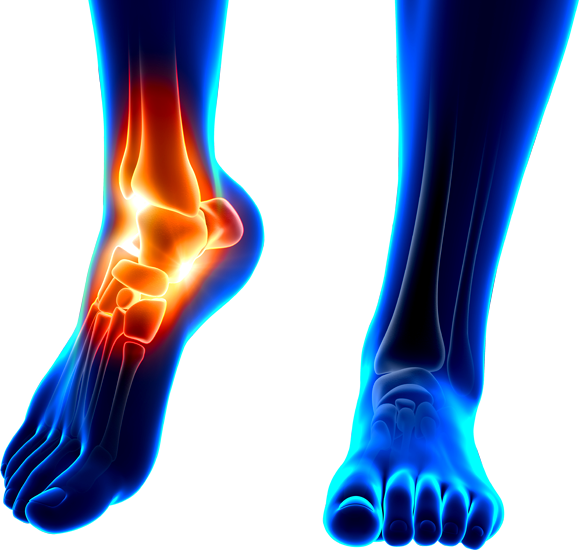Leeds Foot & Ankle Clinic
Experts in foot and ankle surgery

Insertional Achilles Tendonitis.
Insertional Achilles Tendonitis?
Insertional Achilles tendonitis is a condition that affects the Achilles tendon, a strong band of tissue that connects your calf muscles to your heel bone. Unlike non-insertional Achilles tendonitis, which affects the middle portion of the tendon, insertional Achilles tendonitis primarily affects the point where the tendon attaches to your heel bone (calcaneus). This condition can cause pain, swelling, and discomfort in the back of your heel.
What causes insertional Achilles tendonitis?
Insertional Achilles tendonitis is often the result of chronic stress and degeneration of the Achilles tendon. Several factors can contribute to this condition, including:
- Overuse or repetitive stress on the Achilles tendon.
- Sudden increase in physical activity.
- Poorly fitting shoes that irritate the back of the heel.
- Bone spurs or other abnormalities on the heel bone such as Haglund’s deformity.
What are the common symptoms of insertional Achilles tendonitis?
People with insertional Achilles tendonitis may experience the following symptoms:
- Pain, swelling, or tenderness at the back of the heel.
- Stiffness in the morning or after periods of inactivity.
- A bump or prominence at the back of the heel.
- Difficulty with activities such as walking, running, or going up and down stairs.
What are the treatment options for insertional Achilles tendonitis?
Treatment for insertional Achilles tendonitis depends on the severity of the condition. Some common treatment options include:
- Rest: Reducing or avoiding activities that exacerbate the pain is essential for recovery.
- Ice: Applying ice to the affected area can help reduce pain and swelling. Apply ice for 15-20 minutes at a time, several times a day.
- Orthotics: Custom-made or over-the-counter shoe inserts can provide better shock absorption in the heel and sometimes more arch support, to help reduce strain on the Achilles tendon.
- Medications: Over-the-counter pain relievers and anti-inflammatories can help manage pain and inflammation.
- Physiotherapy: A physiotherapist can recommend exercises to stretch and strengthen the calf muscles, improve flexibility in the Achilles tendon.
- Heel Lifts: These can help to temporarily reduce tension on the Achilles tendon, but should not be used for prolonged periods of time as this can exacerbate the tightness in the Achilles tendon, which can make symptoms more prolonged.
- Shock Wave Therapy: Extracorporeal Shock Wave Therapy (ESWT) may be used to stimulate healing in the affected area.
- Surgery: In cases where non-surgical treatments fail to alleviate the condition, surgical intervention to remove bone spurs or to detach and repair the Achilles tendon might be considered.
When should I seek medical help?
It is advised that you consult with a healthcare professional for a proper diagnosis. We do not advise self-diagnosis of any medical condition. Consultation with a foot and ankle specialist will help provide you with an accurate diagnosis and a personalised treatment plan for insertional Achilles tendonitis. Early intervention can lead to a faster and more complete recovery.
If your symptoms are severe or if you suspect a more serious injury, seek medical attention immediately.